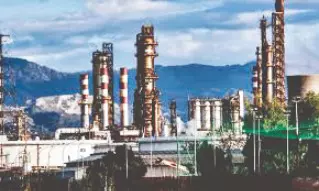Bengal govt plans real-time pollution tracking across industrial parks

Kolkata: The Bengal government is all set to install real-time environmental monitoring and suppression systems across its industrial parks, aiming to strengthen pollution control and bring greater transparency to air and noise conditions inside these zones.
The project, taken up through the West Bengal Industrial Development Corporation (WBIDC), is one of the most extensive technology-based upgrades planned for state-run industrial clusters.
Sources privy to the initiative said the system will be introduced in five parks — Manikanchan SEZ and Shilpangan in North 24-Parganas, Paridhan Garment Park in Kolkata, Rishi Bankim Shilpaudyan in Naihati and the Haldia Industrial Park in Purba Medinipur. These sites were selected because of their high activity levels and the diverse kinds of manufacturing units operating within them.
The project involves setting up cloud-connected units that track ambient air quality and noise levels, supported by suppression systems to control dust and particulate matter. Large outdoor display boards will be placed at park gates to show real-time readings, allowing visitors and workers to see environmental conditions at a glance. Officials said that the state wants a uniform network that can immediately flag abnormal spikes and help responders act quickly.
The selected agency for the work will have six months to finish installing and commissioning the system. For most of the monitoring equipment, a 36-month maintenance obligation is built into the contract, ensuring that the devices remain functional and calibrated.
Those aware of the technical requirements said the equipment must meet stringent national and international certification standards and should already have a record of deployment with pollution control authorities in India.
Officials involved in the planning process said the aim is not only to ensure regulatory compliance but also to build a reliable, long-term database of pollution indicators.
The data generated is expected to help detect trends, guide corrective measures and support future decisions on industrial expansion and infrastructure planning.
The state expects the system to improve safety, increase accountability and create a clearer picture of environmental conditions across its industrial parks, an official said.



